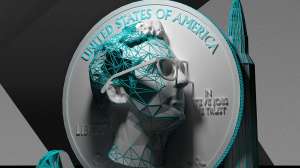
Netflix has produced this excellent documentary focusing on changes in the 3D printing landscape from 2009 until today. While I was hoping the documentary would focus more on the technologies and methodologies involved, the documentary did offer a suscinct explanation of the types of 3D printing.
Instead Netflix focused on four major players in additive manufacturing today; the old guard of 3DSystems and Stratasys, and Desktop newcomers Makerbot and FormLabs.
Following around the leaders in each of these companies, it chronicled the trials and problems of starting companies, finding and keeping ones brand, while at the same time providing growth for your stakeholders.
For me the most interesting discussions presented were the loss of DIY culture at Makerbot and the issues of Propiertary vs. Open source. As FormLabs was sued by 3DS for enfringing on Stereolithography patents.
In my thesis, I have will not be trying to reinvent the “hammer” or maybe the glue gun is better analogy. However, I want to explore the way this tool is used in our culture and by which industries. Stratasys and 3D systems have had industrial products on the market for over 20 years. But it has not been until the proliferation of desktop units over the last 5 or 6 years that 3D printing has become the “IT” thing.
Makerbot originally embraced the DIY culture and open-source knowledge, but as the company expanded it did what all companies must do and began to protect its assets for it shareholders (much to the chagrin of some founding members).
Additive Manufacturings main benefits are its speed and affordability at low volumes, this is in some ways counter to the current industrial system. But it affords itself to small lean businesses which can customize designs. Could these businesses act as industrial “tailors” heming our products to fit our individual needs and concurently re-sewing the industrial middle class back into existence in the United States.
